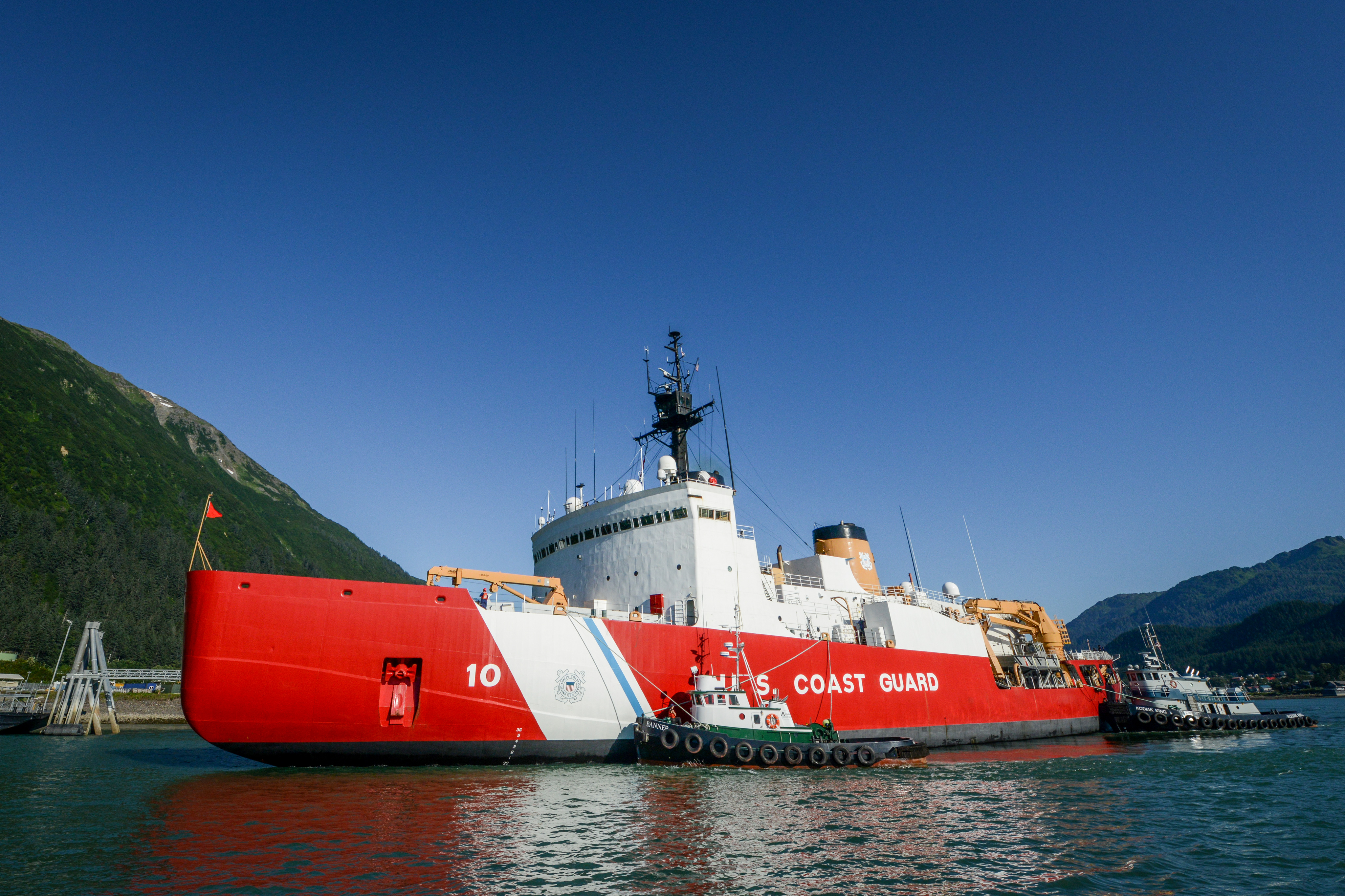US takes next step in icebreaker construction plans

America’s efforts to revamp its icebreaker fleet have lurched a step forward with the release of a draft of the requirements the Navy and Coast Guard are likely to place on the eventual builder of as many as three new vessels.
The draft request for proposals, published October 19, is expected to precede a formal request in the second quarter of 2018, issued in time for funding for the $1 billion vessel to be appropriated in the 2019 federal budget.
According to the request, the Navy-Coast Guard Heavy Polar Icebreaker Program, is seeking to award a contract for the construction of at least one, and as many as three, heavy polar icebreakers.
No date for completion of construction is given, but the Coast Guard is seeking to begin production in 2020. Construction would be carried out according to what the service labels an accelerated timeline.
The draft tender hints that the the winning shipbuilder will be on a tight schedule; potential bidders are asked to provide information about early delivery and to assess issues that could lead to delivery being postponed.
The first vessel is to be built as a replacement for the Polar Star, currently the only heavy icebreaker operated by the Coast Guard.
When it was commissioned in 1976, the Polar Star was given a 30-year lifespan. It was taken out of service in 2006 after suffering an engine failure, but was overhauled and resumed sailing in 2010. Now, the Coast Guard has set a final date of 2023 for its retirement.
Its sister ship, the Polar Sea, has been mothballed since 2011 and is now cannibalized for spare parts for the Polar Star.
The Coast Guard also operates one other polar icebreaker, the Healy, but as a medium-strength icebreaker it is limited to operating in the Arctic, where it primarily conducts research operations.
The release of the draft is the latest step in the procurement process that began in earnest in 2015 with a pledge by then-president Barack Obama to push for construction of icebreakers. With the formal process now under way, this year has seen the Coast Guard strike an agreement with Canadian authorities to use testing facilities in Newfoundland, as well as publish the specifications it will set for the vessels.
In May, Admiral Paul Zukunft, the top coast-guard official, said the US icebreaking fleet needed to be expanded to three heavy and three medium icebreakers in order to be able to provide year-round presence in the Arctic and Antarctic at a time when both regions are taking on increasing strategic importance.
Few in Washington disagree with the need to build new icebreakers, but the process was bogged down by infighting over who would foot the bill for the new vessels
Icebreaking is a Coast Guard operation, but the service’s top brass balked at the prospect of taking money from an annual ship-building budget that in 2018 will amount to $877 million.
It argued that other agencies that benefit from its icebreaking activities, including the navy and the National Science Agency, should also chip in to pay construction costs.